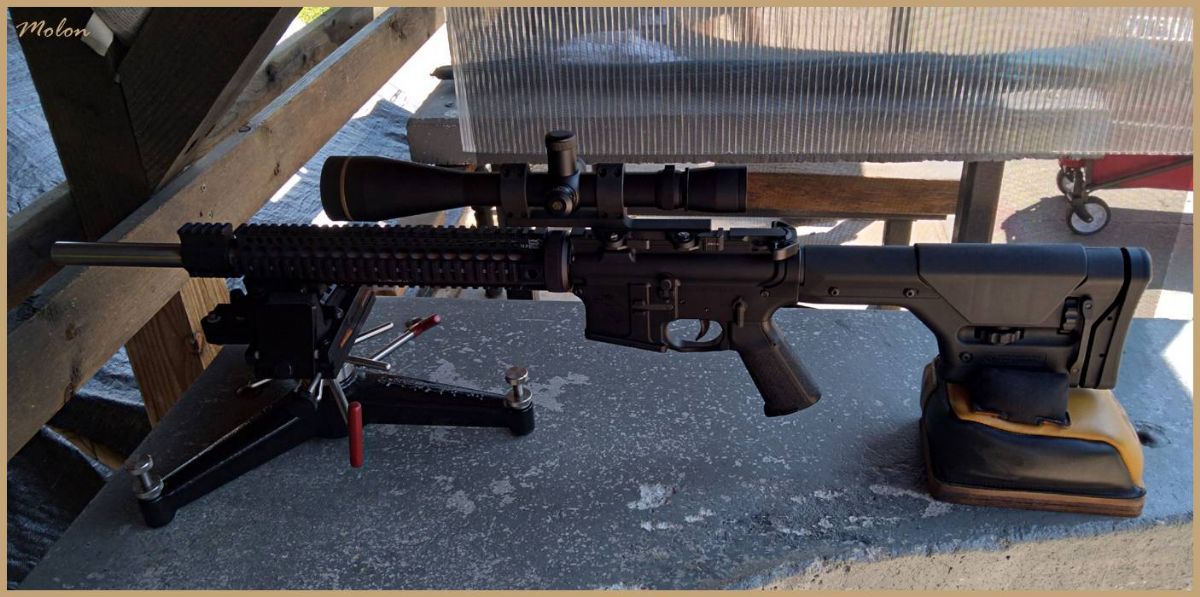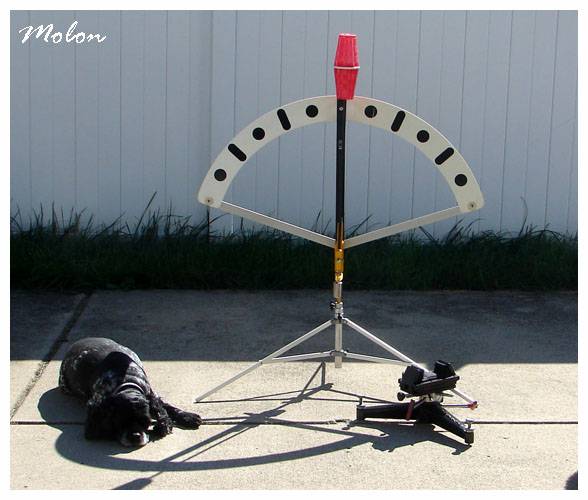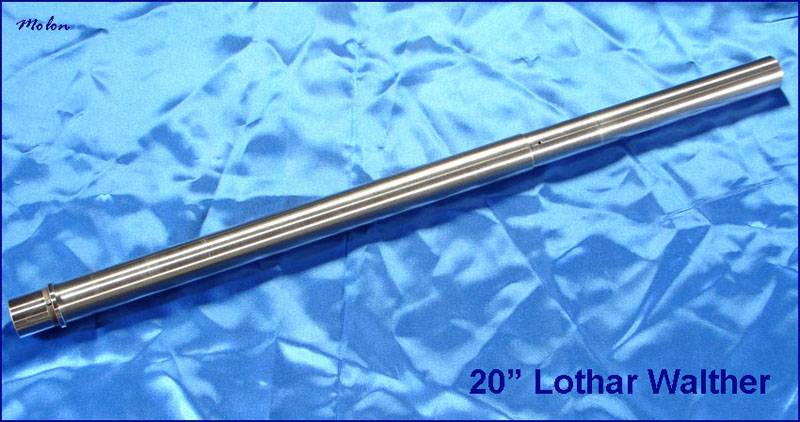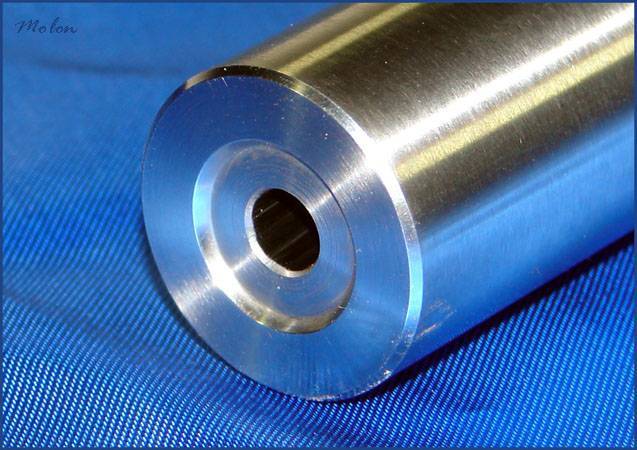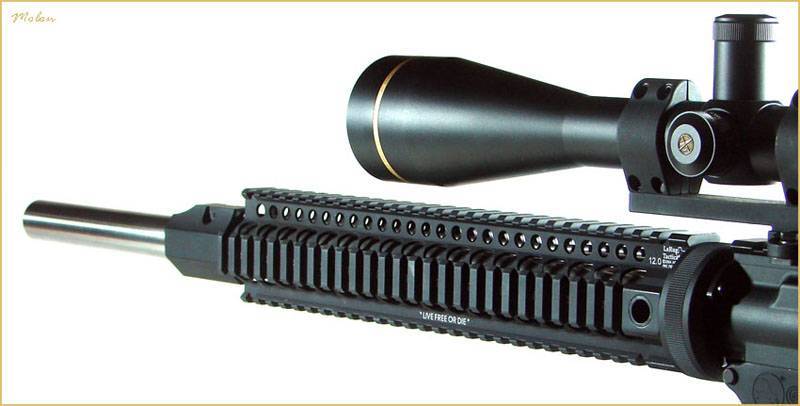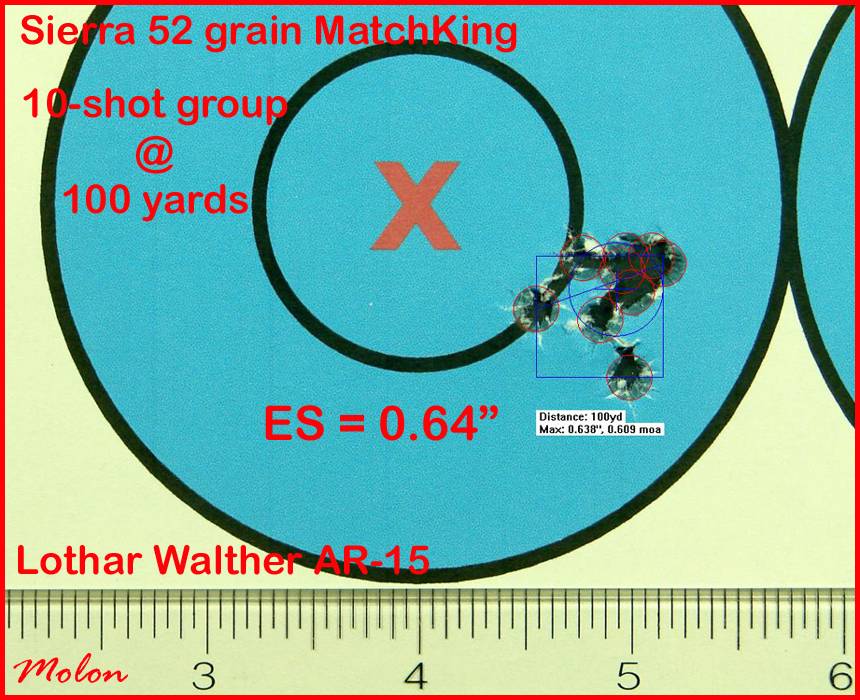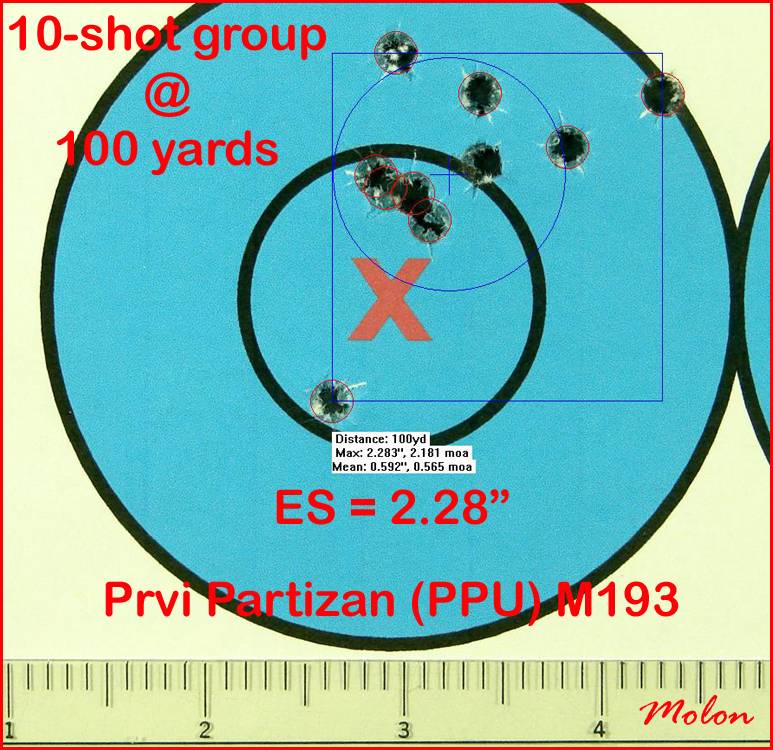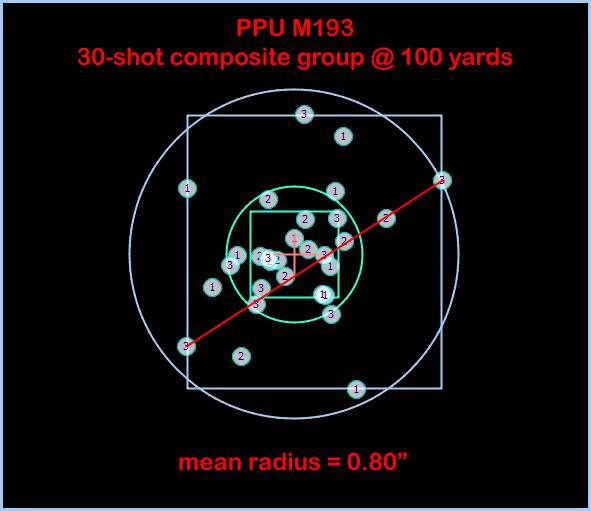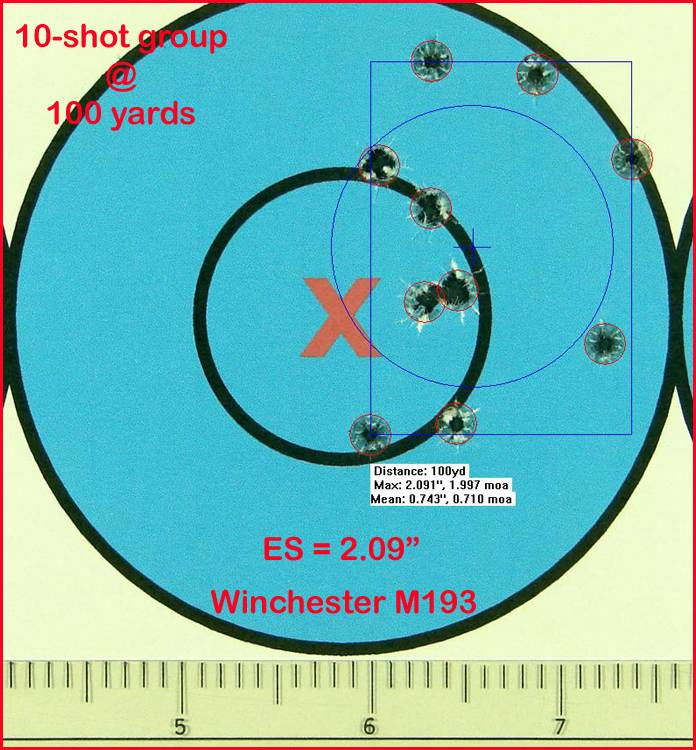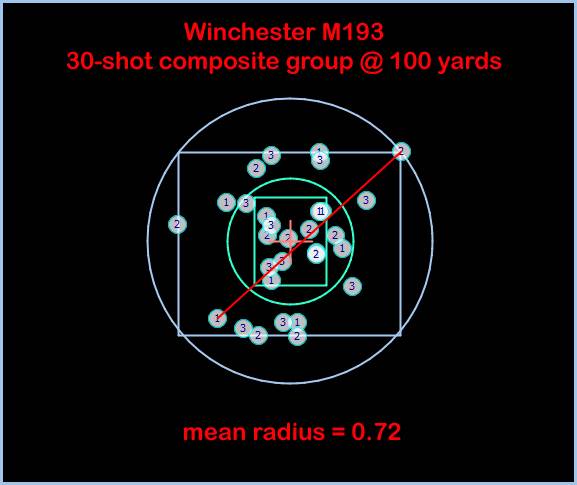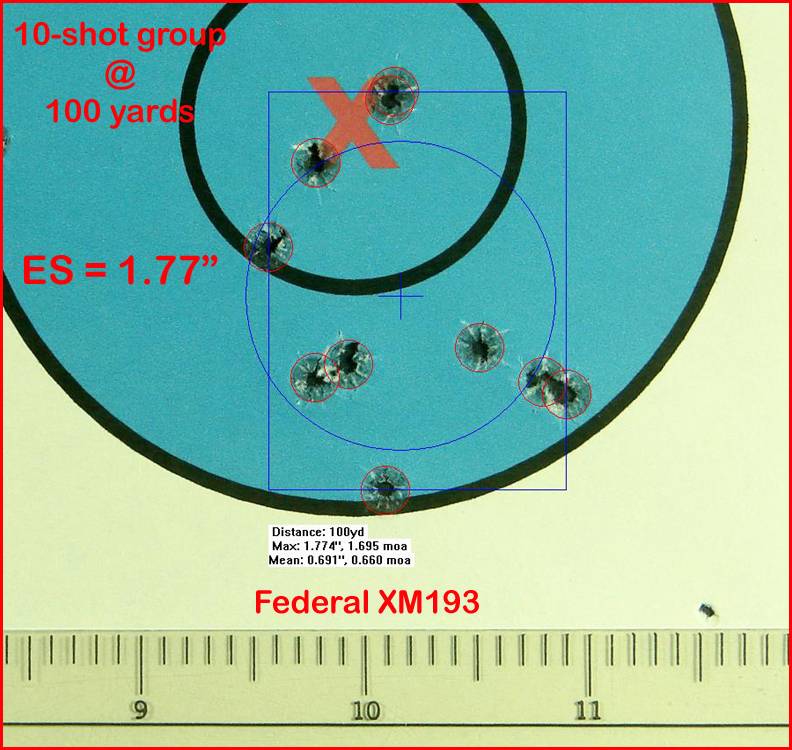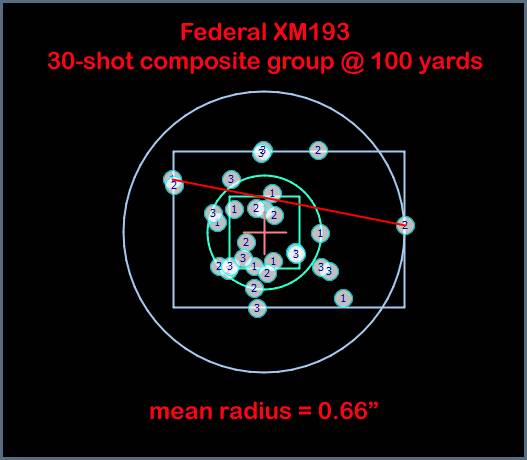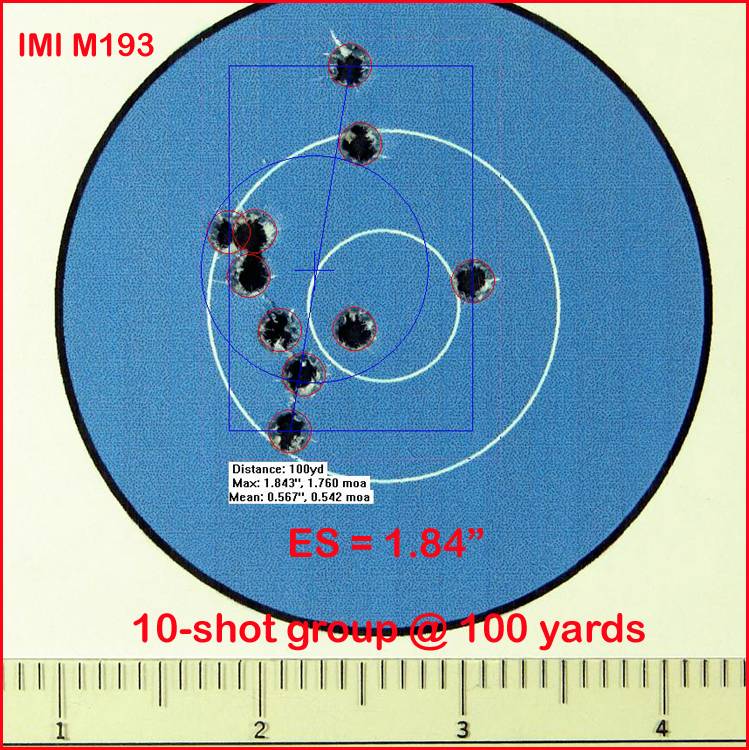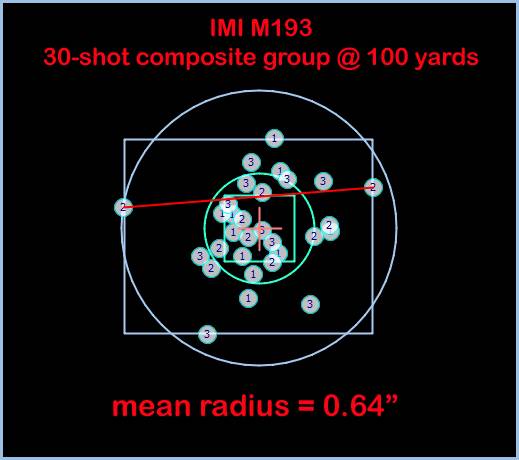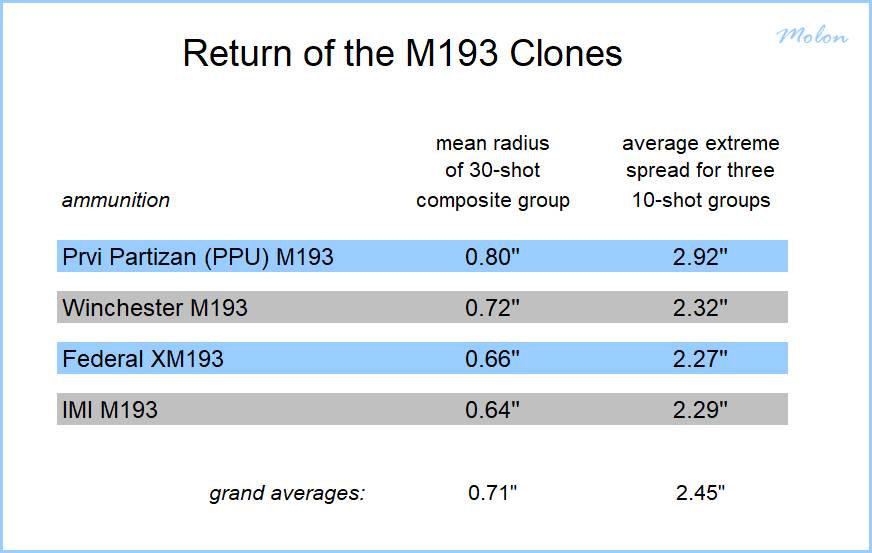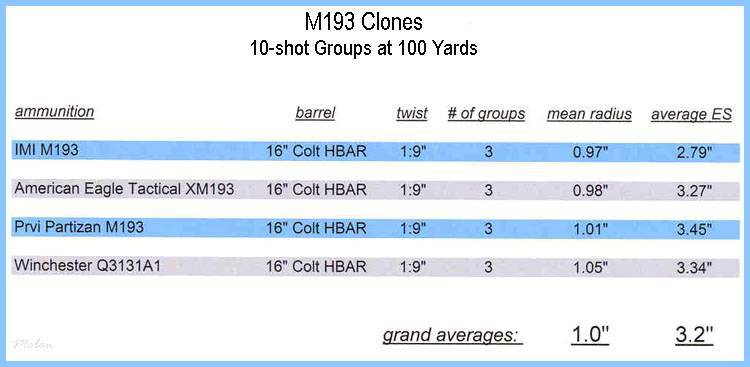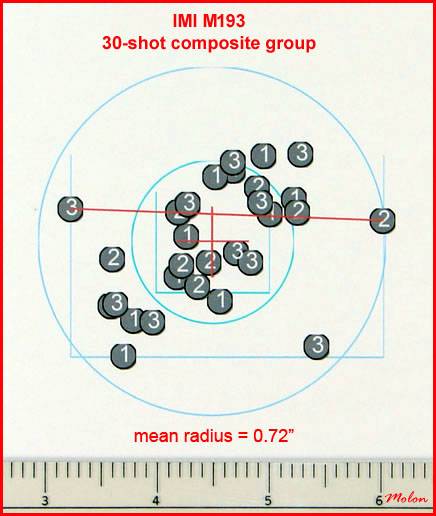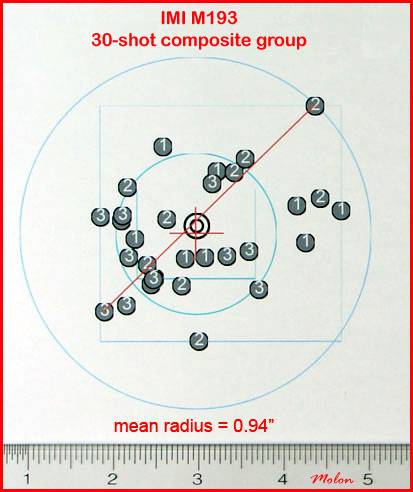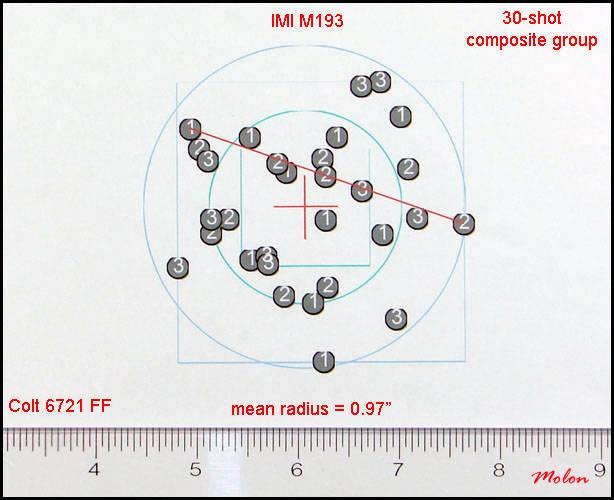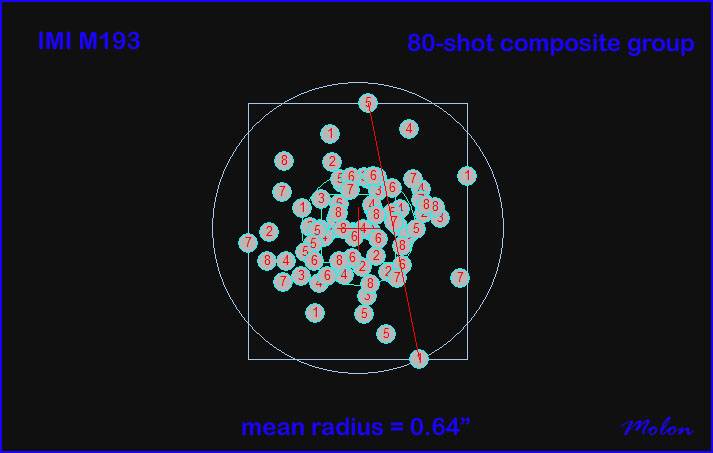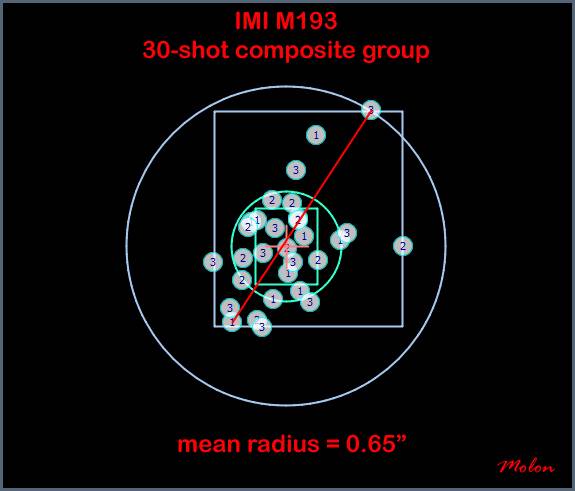Return Of The M193 Clones
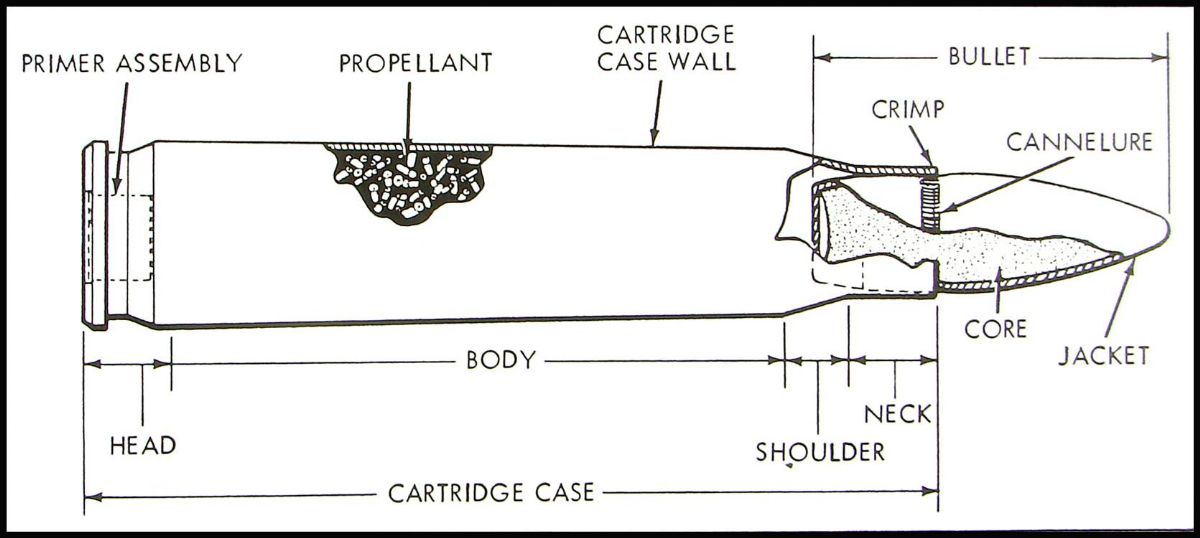
clone: one that appears to be a copy of an original form
Part 1
Genuine US Military M193 can no longer be sold to civilians, thanks to the Clinton Administration. The ammunition that is sold on the commercial market with some form of “M193” in its nomenclature is often referred to as an “M193 clone” because it “appears to be a copy” of genuine M193, but we generally have no idea what specifications of MIL-C-9963 that this ammunition has passed, or has even been tested for.
Genuine M193 must be tested for and pass all of the specifications laid out in the mil-spec, MIL-C-9963. The required areas of testing included in MIL-C-9963 range from velocity, accuracy, chamber pressure and port pressure to waterproofing, temperature stability, bullet extraction, case hardness, fouling and much more.
M193 is loaded with a 55 grain FMJ bullet with a cannelure. The bullet itself, must meet required specifications in order to be used in genuine M193 ammunition. For example, the specification for the thickness of the gilding metal jacket of the bullet is 0.021" with a tolerance of - 0.002". For comparison, the jacket of Hornady’s 55 grain FMJ bullet has a thickness of approximately 0.028”.
Jacket thickness can have a significant effect on terminal ballistic properties, particularly that of fragmentation. Even the composition of the copper alloy used for the jacket and the lead used for the slug must meet mil-spec requirements for genuine M193.
Genuine M193 can only be charged with powder that has been specifically approved by the US Military for use in this cartridge. If the ammunition in question is not loaded with one of the approved powders, it is not genuine M193 and naturally we have no way of determining what powder was used in a load simply by visual inspection.
Genuine M193 will have the annealing iris visible on the shoulder and neck portion of the case. It will also will have crimped and sealed primers. Genuine M193 has a crimped case mouth along with sealant at the case mouth.
In 2010, I posted an in-depth evaluation of four different brands of M193 clones that were readily available at that time.
Attack of the (M193) Clones
For this article, I evaluated recent production lots of the same four brands of M193 clones (though not necessarily the same manufacturers.)
Winchester M193
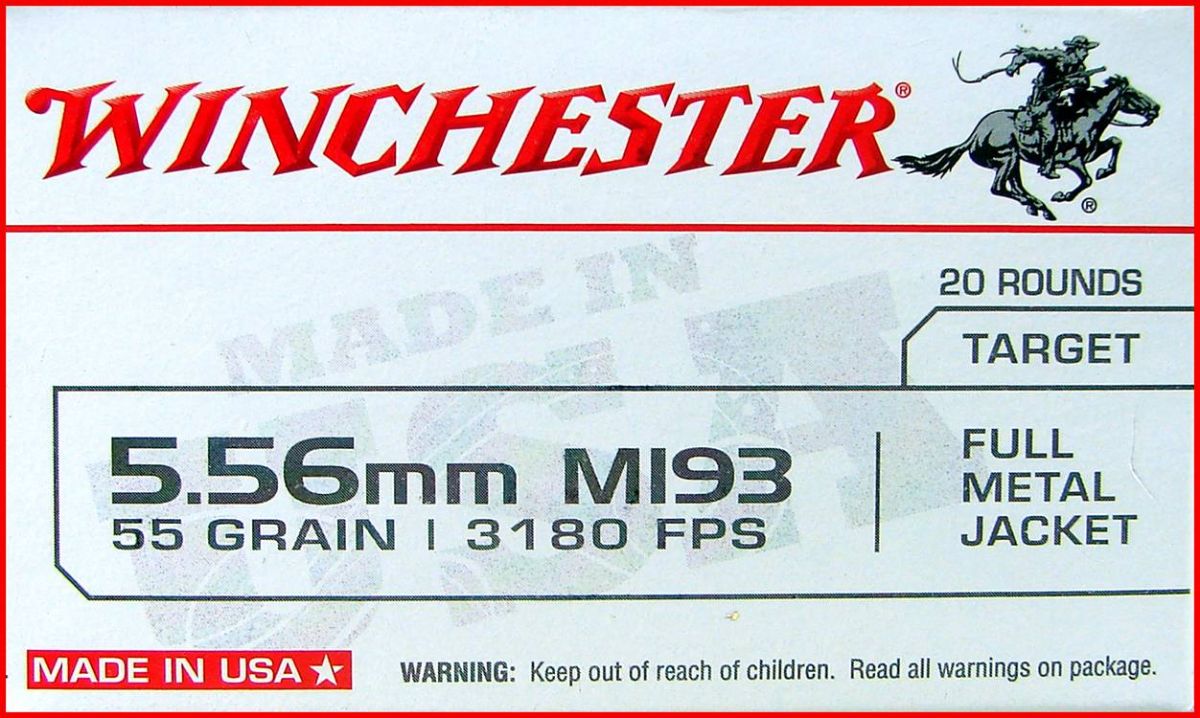
This lot of Winchester M193 is loaded in Lake City brass with a 2021 headstamp. The case-head stamp exhibits the octal station identifiers found on Lake City SCAMP machinery. The brass cases have the annealing iris still visible. The rounds are charged with ball powder.
The primer pockets are crimped, but do not have any sealant. The case mouths are also crimped, but also have no sealant.
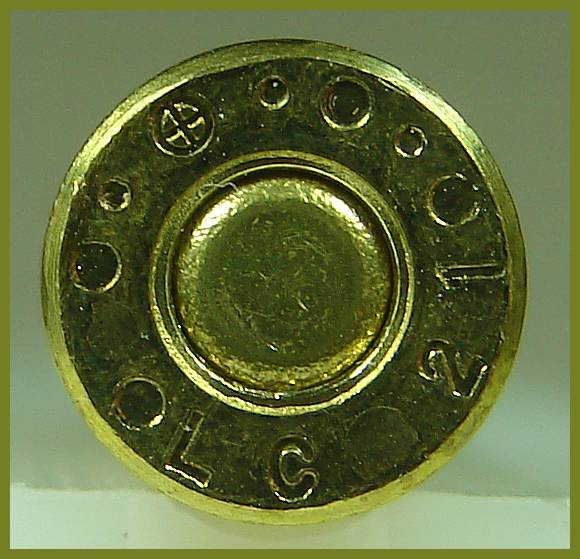
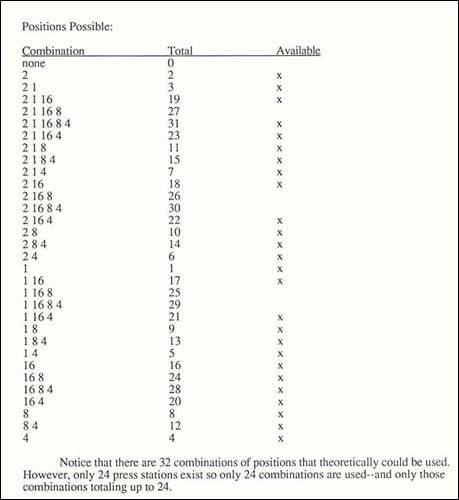
The lot number for this lot of Winchester M193 is pictured below. The “WLC21” in the prefix of the lot number indicates that this lot of Winchester M193 was manufactured at Lake City in 2021 under Winchester “management.”

Federal XM193
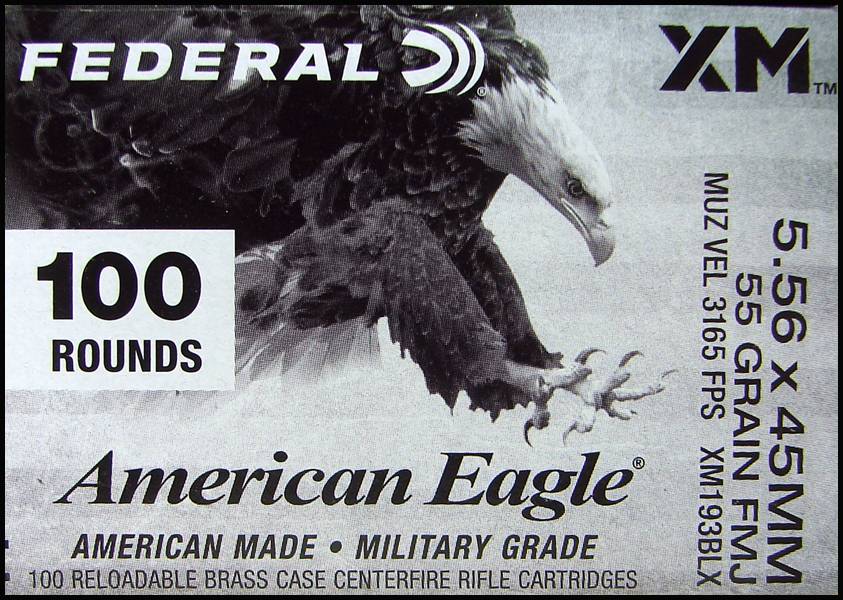
This lot of Federal XM193 is loaded in Lake City brass with a 2021 headstamp. The case-head stamp exhibits the octal station identifiers found on Lake City SCAMP machinery. The brass cases have the annealing iris still visible. The rounds are charged with ball powder.
As with the Winchester M193, the primer pockets of this lot of Federal XM193 are crimped, but do not have any sealant. The case mouths of this lot of Federal XM193 are also crimped, but also have no sealant.
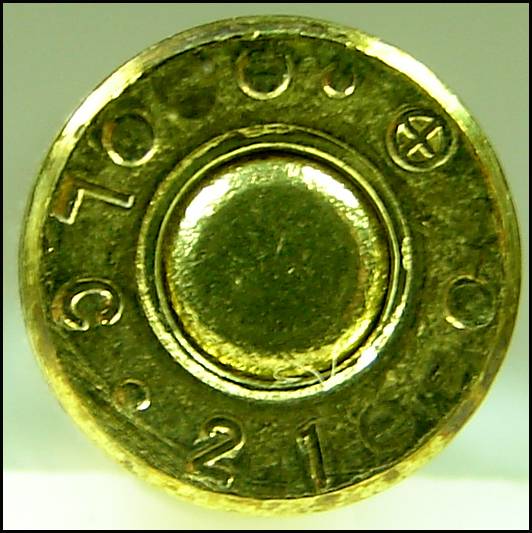
The lot number for this lot of Federal XM193 is pictured below. The “WLC21” in the prefix of the lot number indicates that this lot of Federal XM193 was manufactured at Lake City in 2021 under Winchester “management.”

IMI M193
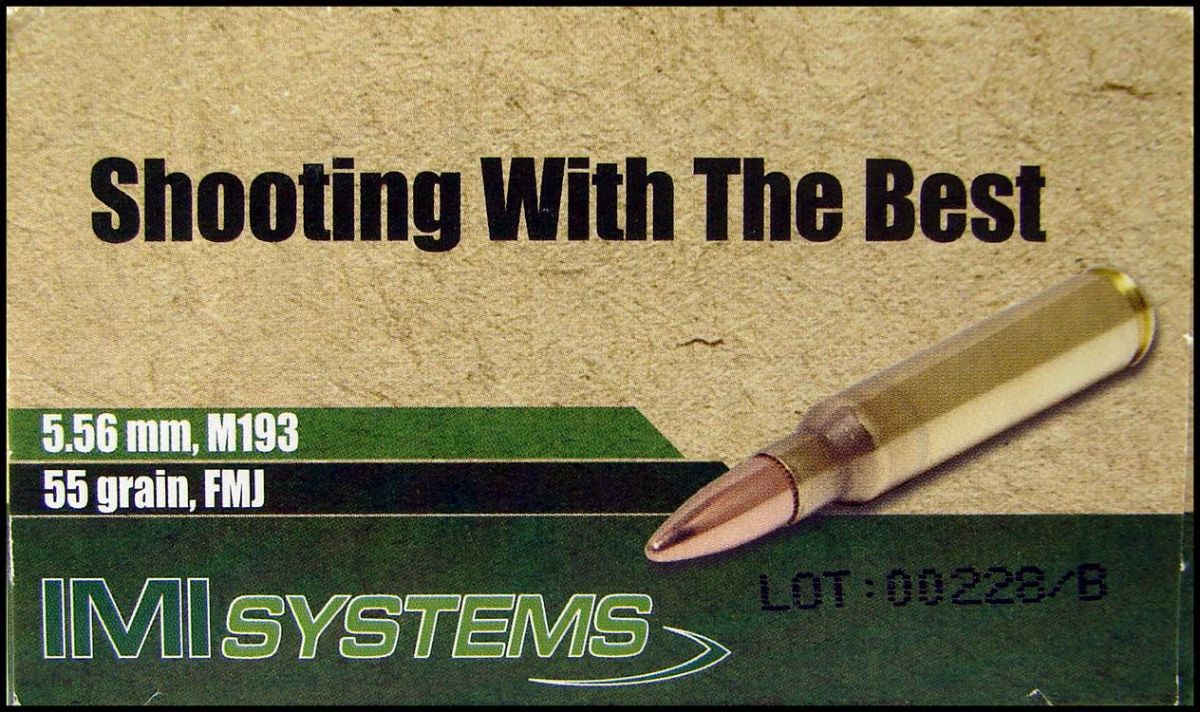
This lot of IMI M193 is loaded in IMI brass with a 2021 headstamp. The annealing iris is visible and the rounds are charged with ball powder. The primer pockets are crimped and sealed and the case mouths are also crimped and sealed.
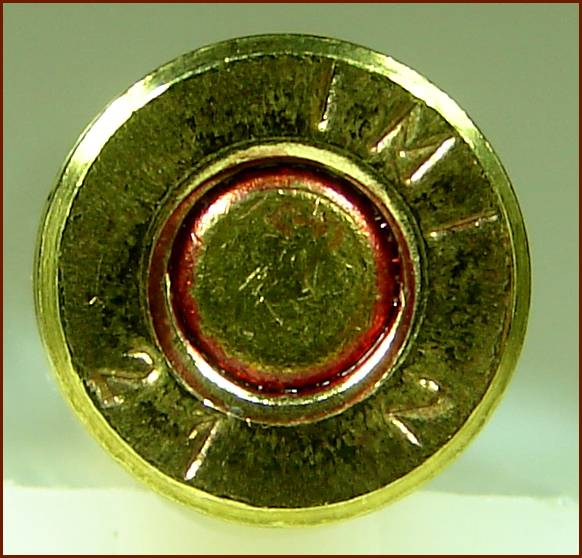
Prvi Partizan (PPU) M193
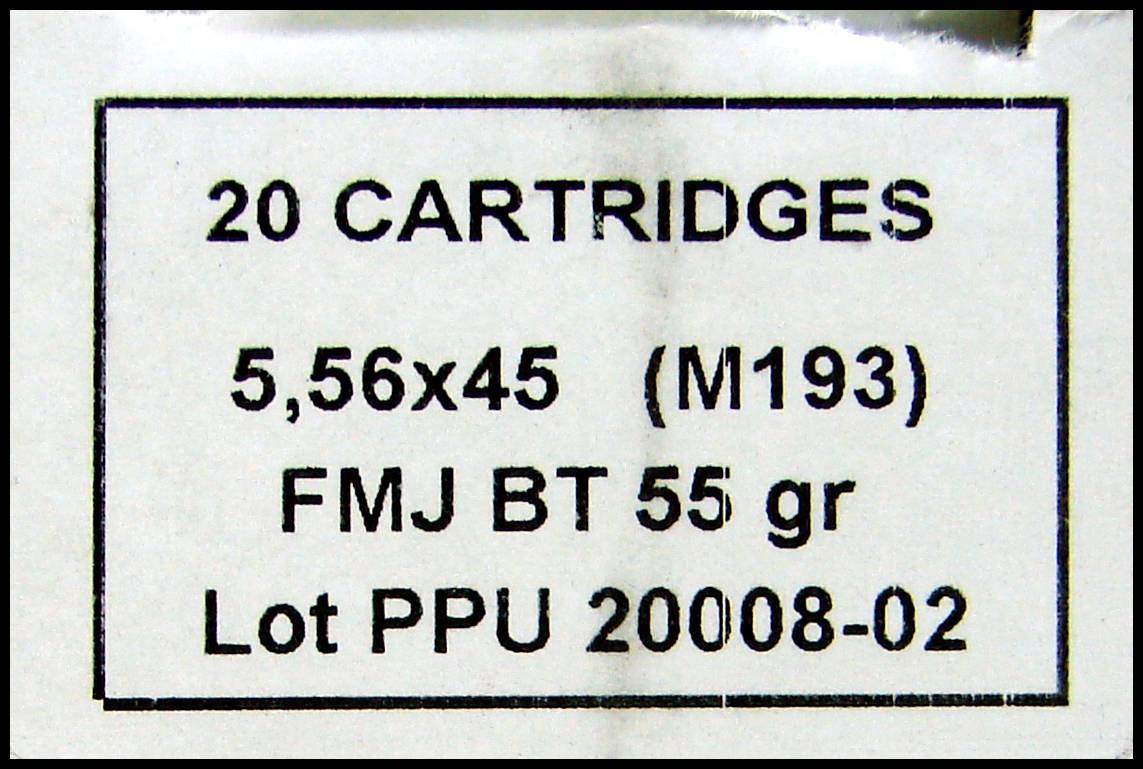
The PPU M193 brass has a 2020 headstamp and the annealing iris is visible. The primer pockets are crimped and sealed, as are the case mouths and the ammunition is charged with ball powder.
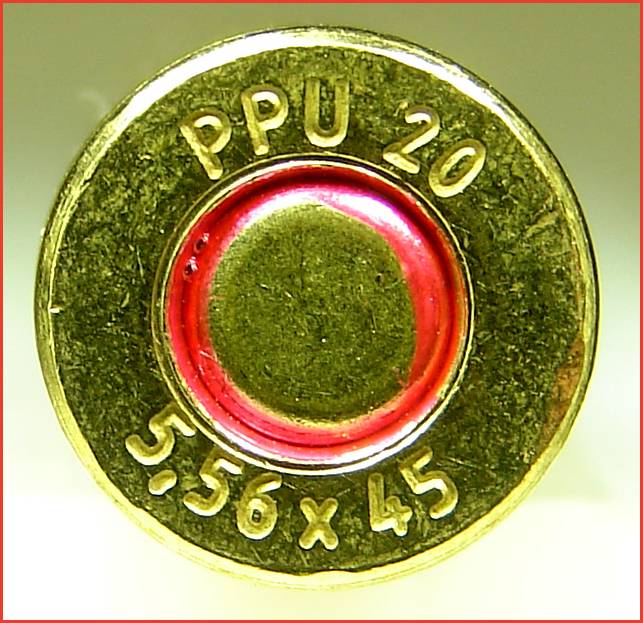
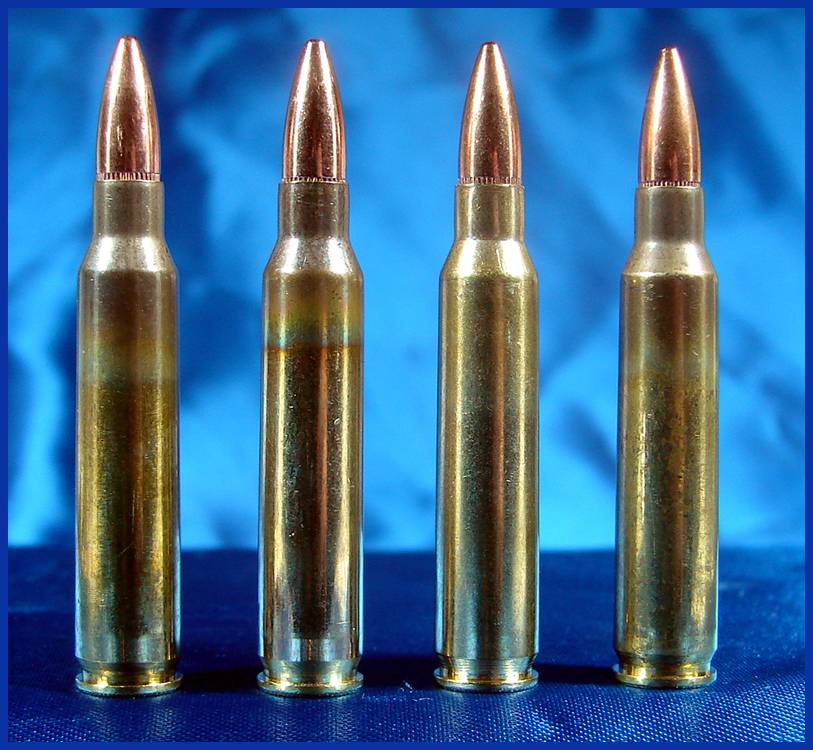
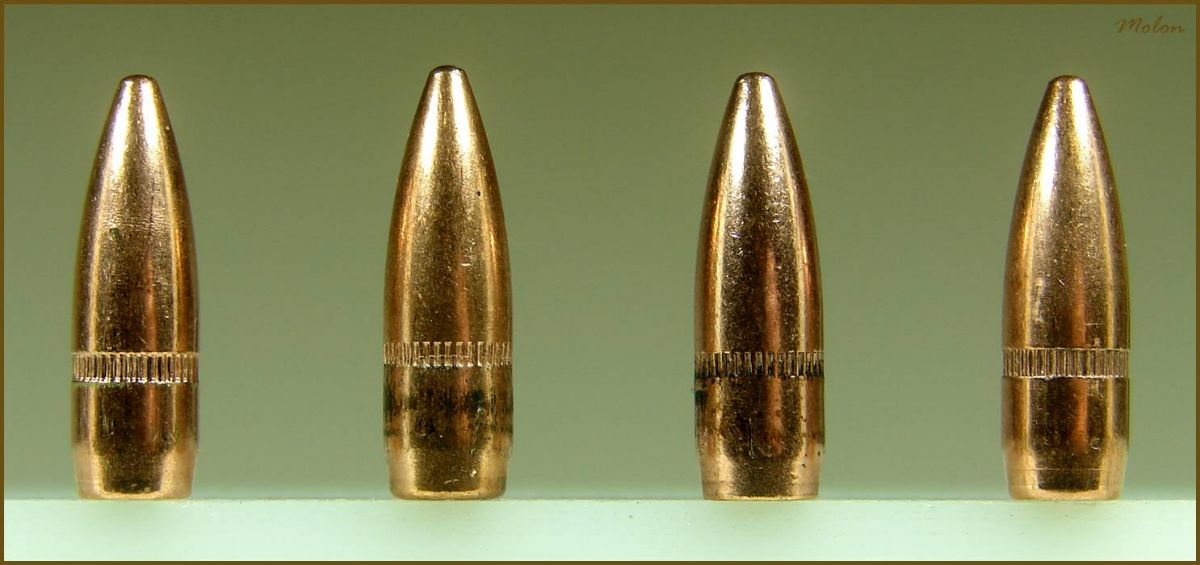
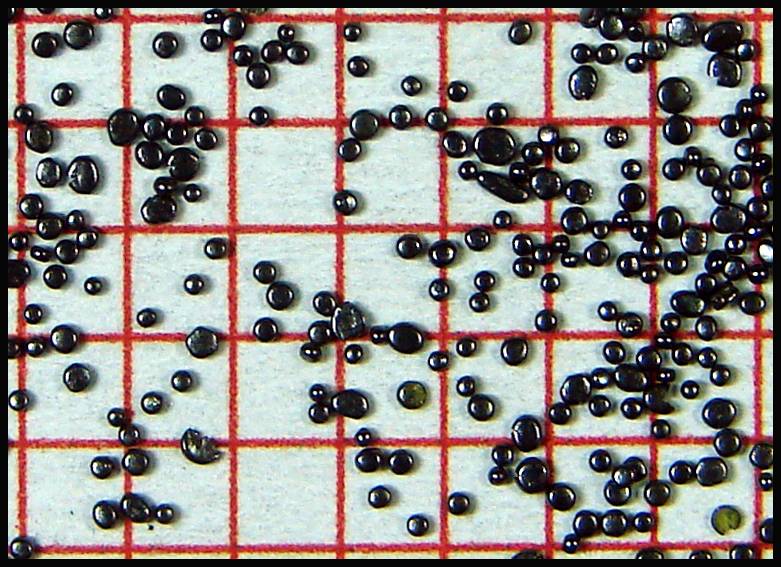
Part 2
Aside from aspects of M193 clones that can be assessed by visual inspection, the two main aspects of M193 clones that we can assess via live fire testing to determine if an M193 clone adheres to the US mil-spec are velocity and accuracy (technically precision). The velocity specification for M193 as cited in MIL-C-9963F states:
"The average velocity of the sample cartridges, conditioned at 72 degrees, plus or minus 2 degrees Fahrenheit (F), shall be 3165 feet per second (ft/sec), plus or minus 40 ft/sec, at 78 feet from the muzzle of the weapon. The standard deviation of the velocities shall not exceed 40 ft/sec."
The velocity specification is for a 20” test barrel. Depending on multiple variables, this velocity specification equates to a muzzle velocity of approximately 3270 ft/sec, plus or minus 40 ft/sec.
As an aside, after reading the above specification, some of you may be wondering, “Why 78 feet from the muzzle?” The answer to that question is that this specification is simply an historical hold-over from the days when “circuit” chronographs (e.g. Le Boulenge Chronograph and the Aberdeen Chronograph) were used at Aberdeen Proving Ground, Frankford Arsenal and Springfield Armory. These types of chronographs required a significant distance between their first and second screens to produce accurate results.
As an example, when using the Boulenge Chronograph, the first screen of the chronograph was placed 3 feet in front of the muzzle and the second screen was placed 150 feet beyond the first screen. For those of you who might not be aware of the following fact; chronographs determine the velocity of the bullet at a point that is midway between the first and the second screen (i.e. not at the location of the first screen). Therefore, with the above spacing, the velocity of the bullet is determined for a point that is 75 feet from the first screen. So, add the three feet (from the muzzle to the first screen) to the 75 feet (the midway point of the screens) to obtain the “78 feet from the muzzle” distance.

I chronographed the four M193 clones evaluated for this article from a semi-automatic AR-15 with a chrome-lined, NATO chambered 20” Colt barrel with a 1:7” twist.
Chronographing was conducted using an Oehler 35-P chronograph with “proof screen” technology. The Oehler 35P chronograph is actually two chronographs in one package that takes two separate chronograph readings for each shot and then has its onboard computer analyze the data to determine if there is any statistically significant difference between the two readings. If there is, the chronograph “flags” the shot to let you know that the data is invalid. There was no invalid data flagged during this testing.
The velocities listed in the table below are muzzle velocities as calculated from the instrumental velocities using Oehler’s Ballistic Explorer software program. Each string of fire consisted of 10 rounds over the chronograph.
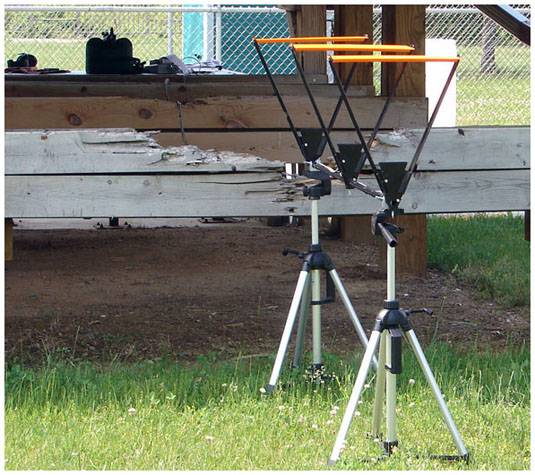

Each round was single-loaded and cycled into the chamber from a magazine fitted with a single-load follower. The bolt locked-back after each shot allowing the chamber to cool in between each shot. This technique was used to mitigate the possible influence of “chamber-soak” on velocity data. Each new shot was fired in a consistent manner after hitting the bolt release. Atmospheric conditions were monitored and recorded using a Kestrel 4000 Pocket Weather Tracker.

Atmospheric conditions
Temperature: 72 degrees F
Humidity: 78%
Barometric pressure: 30.02 inches of Hg
Elevation: 950 feet above sea level
The muzzle velocities of the four M193 clones are listed in the table below, along with the standard deviations and coefficients of variation.
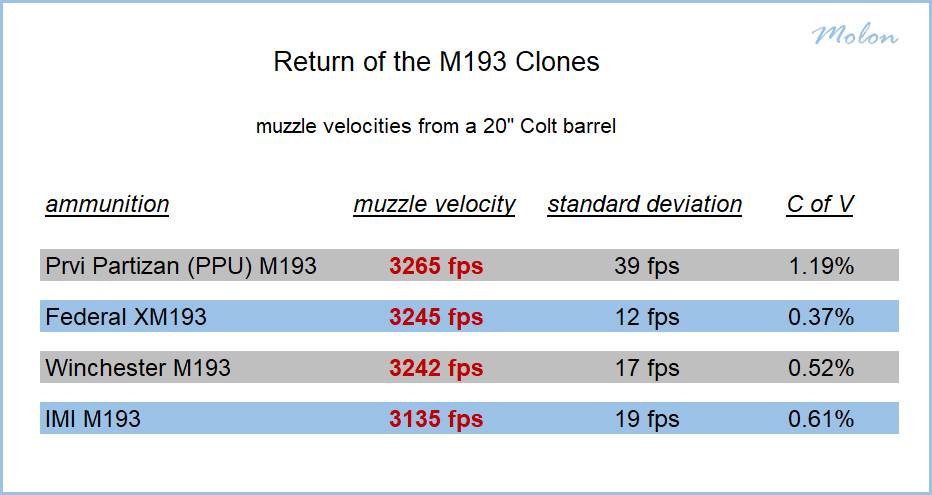
For those of you who might not be familiar with the coefficient of variation (CV), it is the standard deviation, divided by the mean (average) muzzle velocity and then multiplied by 100 and expressed as a percentage. It allows for the comparison of the uniformity of velocity between loads in different velocity spectrums; e.g. 77 grain loads running around 2,650 fps compared to 55 grain loads running around 3,250 fps.
The mil-spec for M193 allows for a coefficient of variation of approximately 1.2%, while one of my best 77 grain OTM hand-loads, with a muzzle velocity of 2639 PFS and a standard deviation of 4 FPS, has a coefficient of variation of 0.15%.

For comparison to the velocities of the M193 clones evaluated for this article, the next table shows the muzzle velocities of the four M193 clones that I evaluated in 2010 (also fired from a 20” Colt barrel.)
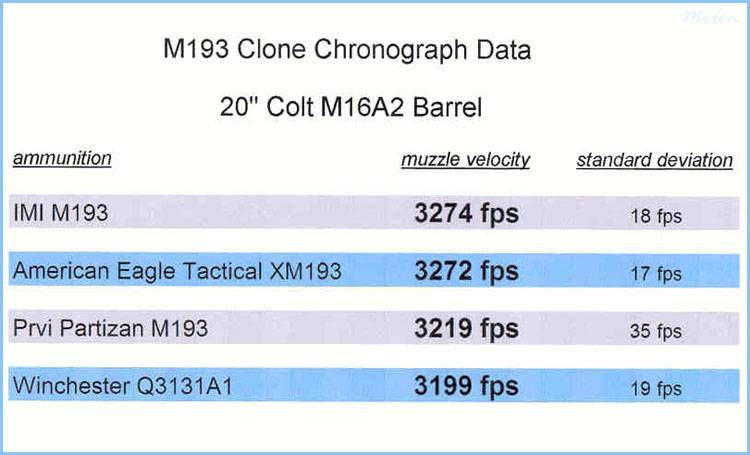
continued . . .

clone: one that appears to be a copy of an original form
Part 1
Genuine US Military M193 can no longer be sold to civilians, thanks to the Clinton Administration. The ammunition that is sold on the commercial market with some form of “M193” in its nomenclature is often referred to as an “M193 clone” because it “appears to be a copy” of genuine M193, but we generally have no idea what specifications of MIL-C-9963 that this ammunition has passed, or has even been tested for.
Genuine M193 must be tested for and pass all of the specifications laid out in the mil-spec, MIL-C-9963. The required areas of testing included in MIL-C-9963 range from velocity, accuracy, chamber pressure and port pressure to waterproofing, temperature stability, bullet extraction, case hardness, fouling and much more.
M193 is loaded with a 55 grain FMJ bullet with a cannelure. The bullet itself, must meet required specifications in order to be used in genuine M193 ammunition. For example, the specification for the thickness of the gilding metal jacket of the bullet is 0.021" with a tolerance of - 0.002". For comparison, the jacket of Hornady’s 55 grain FMJ bullet has a thickness of approximately 0.028”.
Jacket thickness can have a significant effect on terminal ballistic properties, particularly that of fragmentation. Even the composition of the copper alloy used for the jacket and the lead used for the slug must meet mil-spec requirements for genuine M193.
Genuine M193 can only be charged with powder that has been specifically approved by the US Military for use in this cartridge. If the ammunition in question is not loaded with one of the approved powders, it is not genuine M193 and naturally we have no way of determining what powder was used in a load simply by visual inspection.
Genuine M193 will have the annealing iris visible on the shoulder and neck portion of the case. It will also will have crimped and sealed primers. Genuine M193 has a crimped case mouth along with sealant at the case mouth.
In 2010, I posted an in-depth evaluation of four different brands of M193 clones that were readily available at that time.
Attack of the (M193) Clones
For this article, I evaluated recent production lots of the same four brands of M193 clones (though not necessarily the same manufacturers.)
Winchester M193

This lot of Winchester M193 is loaded in Lake City brass with a 2021 headstamp. The case-head stamp exhibits the octal station identifiers found on Lake City SCAMP machinery. The brass cases have the annealing iris still visible. The rounds are charged with ball powder.
The primer pockets are crimped, but do not have any sealant. The case mouths are also crimped, but also have no sealant.


The lot number for this lot of Winchester M193 is pictured below. The “WLC21” in the prefix of the lot number indicates that this lot of Winchester M193 was manufactured at Lake City in 2021 under Winchester “management.”

Federal XM193

This lot of Federal XM193 is loaded in Lake City brass with a 2021 headstamp. The case-head stamp exhibits the octal station identifiers found on Lake City SCAMP machinery. The brass cases have the annealing iris still visible. The rounds are charged with ball powder.
As with the Winchester M193, the primer pockets of this lot of Federal XM193 are crimped, but do not have any sealant. The case mouths of this lot of Federal XM193 are also crimped, but also have no sealant.

The lot number for this lot of Federal XM193 is pictured below. The “WLC21” in the prefix of the lot number indicates that this lot of Federal XM193 was manufactured at Lake City in 2021 under Winchester “management.”

IMI M193

This lot of IMI M193 is loaded in IMI brass with a 2021 headstamp. The annealing iris is visible and the rounds are charged with ball powder. The primer pockets are crimped and sealed and the case mouths are also crimped and sealed.

Prvi Partizan (PPU) M193

The PPU M193 brass has a 2020 headstamp and the annealing iris is visible. The primer pockets are crimped and sealed, as are the case mouths and the ammunition is charged with ball powder.




Part 2
Aside from aspects of M193 clones that can be assessed by visual inspection, the two main aspects of M193 clones that we can assess via live fire testing to determine if an M193 clone adheres to the US mil-spec are velocity and accuracy (technically precision). The velocity specification for M193 as cited in MIL-C-9963F states:
"The average velocity of the sample cartridges, conditioned at 72 degrees, plus or minus 2 degrees Fahrenheit (F), shall be 3165 feet per second (ft/sec), plus or minus 40 ft/sec, at 78 feet from the muzzle of the weapon. The standard deviation of the velocities shall not exceed 40 ft/sec."
The velocity specification is for a 20” test barrel. Depending on multiple variables, this velocity specification equates to a muzzle velocity of approximately 3270 ft/sec, plus or minus 40 ft/sec.
As an aside, after reading the above specification, some of you may be wondering, “Why 78 feet from the muzzle?” The answer to that question is that this specification is simply an historical hold-over from the days when “circuit” chronographs (e.g. Le Boulenge Chronograph and the Aberdeen Chronograph) were used at Aberdeen Proving Ground, Frankford Arsenal and Springfield Armory. These types of chronographs required a significant distance between their first and second screens to produce accurate results.
As an example, when using the Boulenge Chronograph, the first screen of the chronograph was placed 3 feet in front of the muzzle and the second screen was placed 150 feet beyond the first screen. For those of you who might not be aware of the following fact; chronographs determine the velocity of the bullet at a point that is midway between the first and the second screen (i.e. not at the location of the first screen). Therefore, with the above spacing, the velocity of the bullet is determined for a point that is 75 feet from the first screen. So, add the three feet (from the muzzle to the first screen) to the 75 feet (the midway point of the screens) to obtain the “78 feet from the muzzle” distance.

I chronographed the four M193 clones evaluated for this article from a semi-automatic AR-15 with a chrome-lined, NATO chambered 20” Colt barrel with a 1:7” twist.
Chronographing was conducted using an Oehler 35-P chronograph with “proof screen” technology. The Oehler 35P chronograph is actually two chronographs in one package that takes two separate chronograph readings for each shot and then has its onboard computer analyze the data to determine if there is any statistically significant difference between the two readings. If there is, the chronograph “flags” the shot to let you know that the data is invalid. There was no invalid data flagged during this testing.
The velocities listed in the table below are muzzle velocities as calculated from the instrumental velocities using Oehler’s Ballistic Explorer software program. Each string of fire consisted of 10 rounds over the chronograph.


Each round was single-loaded and cycled into the chamber from a magazine fitted with a single-load follower. The bolt locked-back after each shot allowing the chamber to cool in between each shot. This technique was used to mitigate the possible influence of “chamber-soak” on velocity data. Each new shot was fired in a consistent manner after hitting the bolt release. Atmospheric conditions were monitored and recorded using a Kestrel 4000 Pocket Weather Tracker.

Atmospheric conditions
Temperature: 72 degrees F
Humidity: 78%
Barometric pressure: 30.02 inches of Hg
Elevation: 950 feet above sea level
The muzzle velocities of the four M193 clones are listed in the table below, along with the standard deviations and coefficients of variation.

For those of you who might not be familiar with the coefficient of variation (CV), it is the standard deviation, divided by the mean (average) muzzle velocity and then multiplied by 100 and expressed as a percentage. It allows for the comparison of the uniformity of velocity between loads in different velocity spectrums; e.g. 77 grain loads running around 2,650 fps compared to 55 grain loads running around 3,250 fps.
The mil-spec for M193 allows for a coefficient of variation of approximately 1.2%, while one of my best 77 grain OTM hand-loads, with a muzzle velocity of 2639 PFS and a standard deviation of 4 FPS, has a coefficient of variation of 0.15%.

For comparison to the velocities of the M193 clones evaluated for this article, the next table shows the muzzle velocities of the four M193 clones that I evaluated in 2010 (also fired from a 20” Colt barrel.)

continued . . .
Last edited:

